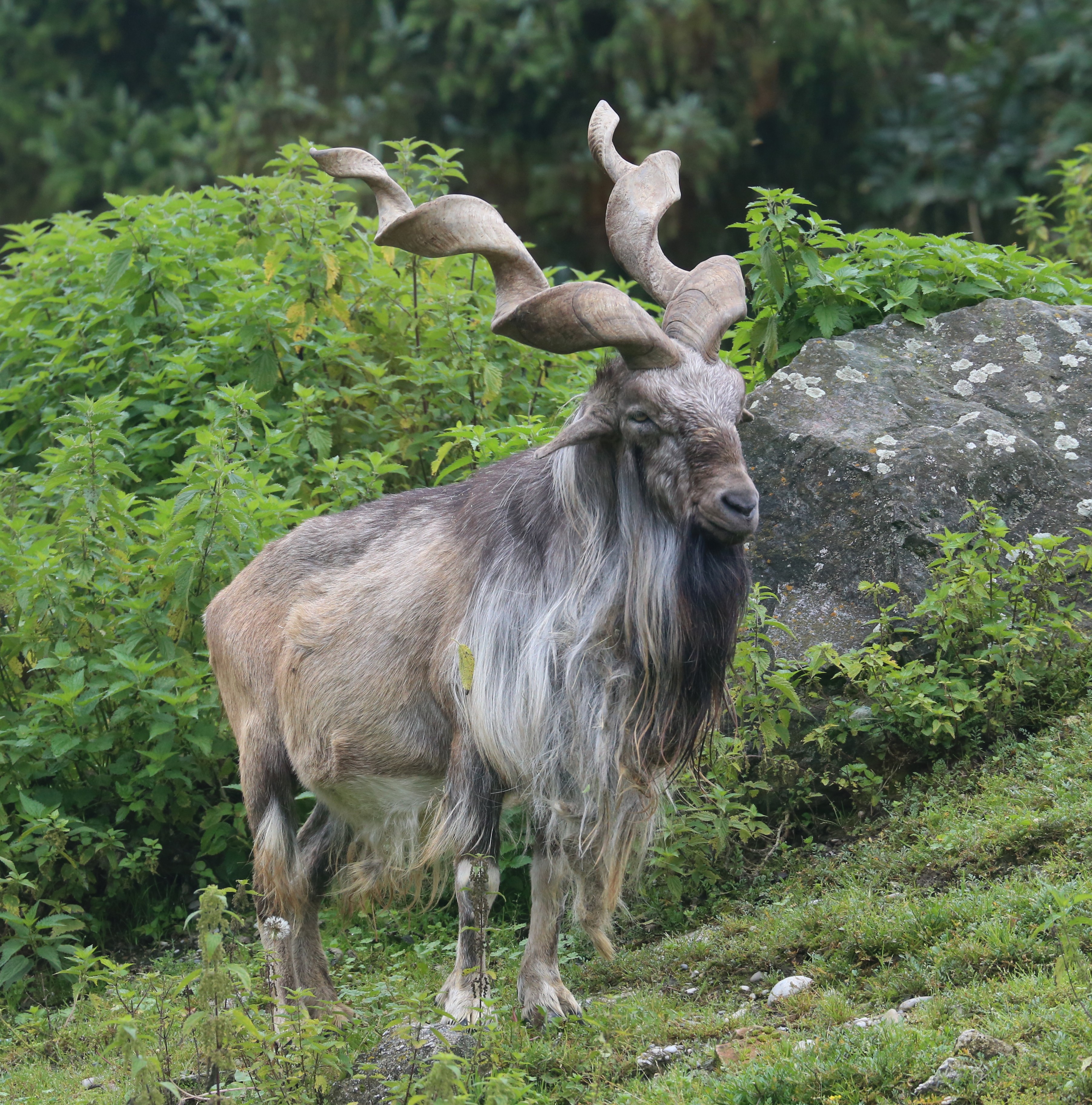The Albion Markhor /ˈmɑːrkɔːr/, or just Markhor, is a large Capra (goat) species that was native to Central Asia on Old Earth. Originally brought by the first settlers to Albion as hardy livestock, it quickly escaped captivity and has since become a symbol of the freeholder movement.
History on Earth
The markhor's native distribution on Old Earth ranged throughout the Karakoram mountains, and the Himalayas, and was the national animal of Pakistan. The word markhor (meaning snake eater) comes from both Urdu and Persian languages, as ancient myths claimed they would eat serpents due to the twisting horns of the males.
"...a man who is a good walker will never wish for any finer sport than ibex or markhoor shooting"
The markhor was valued throughout history as a challenging game species, due to it being the largest of the true goat species and the difficulty of the terrain it favored. After the subjugation of the Indian subcontinent, a herd was kept by Queen Victoria of England at the Windsor Great Park. Populations cratered in the 19th and 20th centuries due to habitat loss and overhunting, but conservation and breeding programs (one of the largest being carried out in Windsor) helped the species rebound strongly by the 23rd century.
Adapting to Albion
When the The Great Diaspora occurred during the XXth century, goat species were among the most popular animals brought by humans to the stars. Hardy and easier to handle than cattle while providing the same resources, many burgeoning star nations depended on their goats to survive. To Albion, settlers brough many species,such as the Kashmiri, Bilberry, American Lamancha, Boer, Kiko, Toggenburg, and Markhor. Shortly after arrival however Markhor began escaping their pens and dissapearing into the nearby forest of Flying Birch trees.
One of the most popular tree species on Albion, the planet's lower gravity allows Flying Birch trees to regularly surpass 100 meters. The trees are named for the strong mangrove-like seconday trunks that shoot off from the main body and burrow into the ground (reminiscent of the flying buttresses of gothic architecture) as well as their smooth white bark that peels in horizontal strips. Additionally, many flying and gliding animals make their homes in the hollows of the trees, or in pockets created by conjoined roots. The Albion Markhor has learned to use these same locations for shelter, navigating the tall roots just like they would the mountains back on Earth.
Use in the Freeholding Community
Although they are more lanky than on Earth due to the lower gravity, the Albion Markhor still retain their original strong musculature and skeleton that is atypical of the local animals. This allows them to typically fight off most predators. In some cases population growth has become uncontrolled, pushing out local species. This is a problem because of the tendency of the Albion Markhor to overgraze the understory and forest floor, as they are unable to fully digest most of the native plantlife and so need to consume larger amounts. Because of this hunting is often encouraged to reduce their impact, though due to how difficult they are to pursue only the wealthiest can typically spend the time needed to get a kill.
Eat the snakes! Eat the Snakes! Eat the Snakes! Eat the snakes! Eat the Snakes!
All these reasons, the Markhor's hardiness, its tendency to escape enclosures, and its resistance to culling, have made it a symbol for the freeholders of Albion. Freeholders are land owners who are neither nobles or live inside a territory governed by one, instead being direct subjects of the monarch. This can often lead to conflicts between them and the nobility, as they can compete for control of similar resources. Additionally, many freeholders have been driven into bankruptcy by the actions of the nobles (or wealthy commoners in their lands) which has caused resentment and even armed altercations since the earliest days of Albion's history.
Freeholder artwork and stories often depict the Markhor as a scrappy protanist, fooling and luring its hunters (often nobles or moneylenders) into traps or into the path of large predators. Other depictions include imagery of Markhors devouring screaming snakes, representing the role of freeholders (the Markhors) to combat the plots of the wealthy elite (the snakes). The Presiding Freeholder, the elected representative of the freeholder community that sits in the House of Lords, has historically worn jewelry decorated with Markhors as a symbol of their position.



Comments